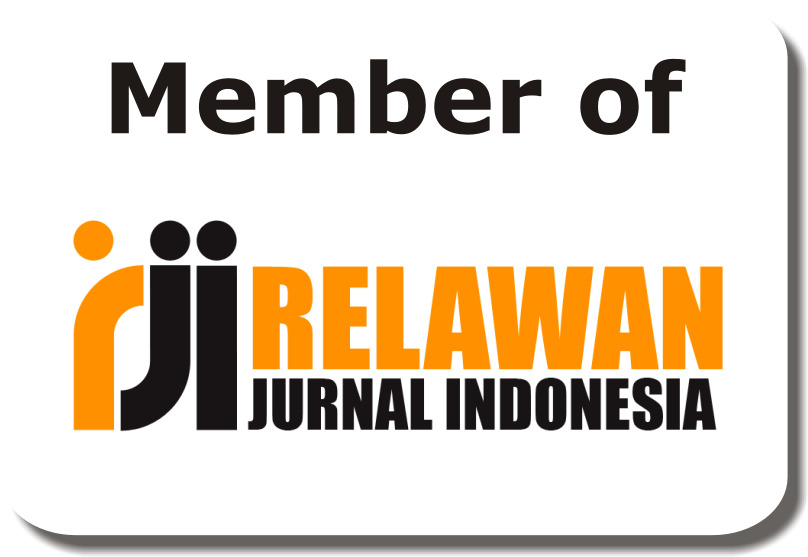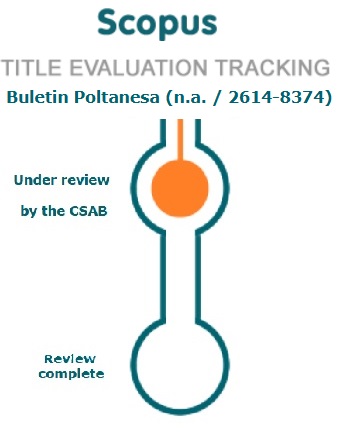Nutrient Loss and Economic Loss Due to Sedimentation in Mamasa Sub-Watershed
DOI:
https://doi.org/10.51967/tanesa.v26i1.3250Keywords:
Economic loss, Nutrient Loss, Sedimentation, Soil Degradation, WatershedAbstract
The Mamasa Subwatershed in Indonesia faces significant challenges due to soil degradation, characterized by high erosion and sedimentation rates, leading to nutrient and economic losses. This study analyzes the impact of these issues on nutrient loss and associated economic costs, focusing on nitrogen (N), phosphorus (P), and potassium (K). Sediment samples were collected from upstream, middle, and downstream areas, revealing that the upstream region experiences the highest sedimentation (6,716.21 tons/ha/year) and nutrient losses (94.02 kg N, 12.63 kg P, and 22.16 kg K per hectare annually). Economic losses due to nutrient depletion, calculated using the replacement cost of fertilizers, are estimated at IDR 4.5 billion annually for subsidized fertilizers and IDR 23.7 billion for non-subsidized fertilizers. Key contributing factors include steep slopes (25-45% and >45%), shifting cultivation, and inadequate conservation practices. This degradation significantly impacts soil fertility, reducing agricultural productivity and imposing financial burdens on farmers. The study highlights the need for integrated watershed management, emphasizing soil conservation techniques such as terracing, agroforestry, and farmer education on sustainable practices. These measures could mitigate erosion, reduce nutrient loss, and enhance soil recovery, contributing to the sustainability of the Mamasa Sub-watershed ecosystem and improving local livelihoods. This research underscores the critical need for data-driven, multidisciplinary approaches to address watershed management's ecological, economic, and social dimensions. By implementing effective strategies, stakeholders can achieve more sustainable land use and mitigate the adverse effects of soil degradation.
References
Amprin, A., Abdunnur, A., & Masruhim, M. A. (2020). Kajian Kualitas Air dan Laju Sedimentasi Pada Saluran Irigasi Bendung Tanah Abang Di Kecamatan Long Mesangat Kabupaten Kutai Timur. Jurnal Pertanian Terpadu, 8(1), 105–118. https://doi.org/10.36084/jpt..v8i1.233
Anila, C., Barkey, R. A., Arsyad, U., & Nursaputra, M. (2020). Land use planning for mitigation of erosion, sediments, and stabilization of water discharge in the Mamasa Watershed. IOP Conference Series: Earth and Environmental Science, 575(1). https://doi.org/10.1088/1755-1315/575/1/012131
Ary Wibisono, M., Hastuti, S., Endar Herawati Program Studi Budidaya Perairan Jurusan Perikanan Fakultas Perikanan dan Ilmu Kelautan, V., Diponegoro Jl Soedarto, U., & Jawa, S. (2016). Production of Daphnia sp. which Cultured with Combined Tofu Waste and Animal Feces in Fertilizer Based on Fermented Bread Waste. Journal of Aquaculture Management and Technology, 6(3), 187–196. http://ejournal-s1.undip.ac.id/index.php/jamt
Auliyani, D. (2020). Upaya Konservasi Tanah dan Air pada Daerah Pertanian Dataran Tinggi di Sub-Daerah Aliran Sungai Gandul. Jurnal Ilmu Pertanian Indonesia, 25(3), 382–387. https://doi.org/10.18343/jipi.25.3.382
Bindraban, P. S., van der Velde, M., Ye, L., van den Berg, M., Materechera, S., Kiba, D. I., Tamene, L., Ragnarsdóttir, K. V., Jongschaap, R., Hoogmoed, M., Hoogmoed, W., van Beek, C., & van Lynden, G. (2012). Assessing the impact of soil degradation on food production. Current Opinion in Environmental Sustainability, 4(5), 478–488. https://doi.org/https://doi.org/10.1016/j.cosust.2012.09.015
Budiati, L., Hasthi, S., & Elizabeth, M. (2024). Low-Impact Development Of Watershed Management: A Sustainability Review on Garang River Watershed in Semarang City, Indonesia. Environmental Engineering and Management Journal, 23, 2341–2352. https://doi.org/10.30638/eemj.2024.188
Chen, L., Liu, D.-F., Song, L.-X., Cui, Y.-J., & Zhang, G. (2013). Characteristics of nutrient loss by runoff in sloping arable land of yellow-brown under different rainfall intensities. Huan jing ke xue= Huanjing kexue / [bian ji, Zhongguo ke xue yuan huan jing ke xue wei yuan hui “Huan jing ke xue” bian ji wei yuan hui.], 34, 2151–2158.
Fajeriana, N., & Ali, A. (2024). The Role of Local Communities in Implementing Soil and Water Conservation Practices for Sustainable Food Production Enhancement in the Salawati District, Sorong Regency. Jurnal Penelitian Pertanian Terapan, 24(1), 134–147. https://doi.org/10.25181/jppt.v24i1.3402
Hana H, Suwardi, & Purwandaru W. (2021). Kajian Tingkat Sedimen Terlarut Dan Material Nutrien (N Dan P) Pada Perkebunan Dan Pertanian. Seminar Nasional Biologi, 9, 42–47.
Hasthi, S., Budiati, L., & Setiadi, R. (2023). Identifikasi Kondisi Eksisting Dan Dampak Sedimentasi Pada Sungai Kreo Dan Kaligarang Kota Semarang. Saintifika, 24(2), 95. https://doi.org/10.25037/saintifika.v24i2.133
Isra, N., Arsyad, U., & Chairuddin, Z. (2023). Sedimentation analysis using SWAT model (soil and water assessment tool) in Mamasa Sub-Watershed. IOP Conference Series: Earth and Environmental Science, 1230(1). https://doi.org/10.1088/1755-1315/1230/1/012027
Jamalludin, J., Riduansyah, R., & Krisnohadi, A. (2023). Studi Karakteristik Das Dan Kualitas Air Untuk Irigasi Pada Sub Daerah Aliran Sungai (Das) Tayan Bagian Hilir Kabupaten Sanggau. Jurnal Sains Pertanian Equator, 12(4), 892. https://doi.org/10.26418/jspe.v12i4.66878
Jang, W. S., Neff, J. C., Im, Y., Doro, L., & Herrick, J. E. (2021). The Hidden Costs of Land Degradation in US Maize Agriculture. Earth’s Future, 9(2), 1–19. https://doi.org/10.1029/2020EF001641
Jariyah, N. A. (2019). Evaluation of Socio Economic Performance of the Brantas Watershed Based on Aplication of P61/Menhut-Ii/2014. Jurnal Penelitian Sosial dan Ekonomi Kehutanan, 16(2), 95–114. https://doi.org/10.20886/jpsek.2019.16.2.95-114
Jariyah, N. A. (2020). Analisis Aspek Sosial Ekonomi Untuk Mendukung Pengelolaan DAS Moyo, Kabupaten Sumbawa, Nusa Tenggara Barat. Jurnal Penelitian Kehutanan Faloak, 4(2), 95–114. https://doi.org/10.20886/jpkf.2020.4.2.95-114
Jariyah, N., & Pramono, I. (2018). Kerentanan Sosial Ekonomi dan Biofisik Daerah Aliran Sungai Solo (Socio-economic and biophysical vulnerability of Solo Watershed). Jurnal Penelitian Pengelolaan Daerah Aliran Sungai, 2(2), 89–110. https://doi.org/10.20886/jppdas.2018.2.2.89-110
Miardini, A., Gunawan, T., & Murti, S. H. (2016). Kajian Degradasi Lahan Sebagai Dasar Pengendalian Banjir Di Das Juwana. Majalah Geografi Indonesia, 30(2), 134. https://doi.org/10.22146/mgi.15633
Mir, A. A., & Patel, M. (2024). A Comprehensive Review on Sediment Transport, Flow Dynamics, and Hazards in Steep Channels. Journal of Water Management Modeling, 32. https://doi.org/10.14796/JWMM.C517
Mirzabaev, A., Strokov, A., & Krasilnikov, P. (2023). The impact of land degradation on agricultural profits and implications for poverty reduction in Central Asia. Land Use Policy, 126, 106530. https://doi.org/https://doi.org/10.1016/j.landusepol.2022.106530
Mosi, Y., Warow, N., Usman, M., Bahuwa, I. C., Rosalia, N., Kadir, Z. S., Hamidun, M. S., Lihawa, F., & Dunggio, I. (2024). Analisis Erosi dan Sedimentasi di Sub Das Alo-Pohu Kesatuan Pengelolaan Hutan Vi Gorontalo. Jurnal Sains Teknologi & Lingkungan, 10(2), 321–331. https://doi.org/10.29303/jstl.v10i2.616
Palacino, B., Ascaso, S., Valero, A., & Valero, A. (2024). Regeneration costs of topsoil fertility: An exergy indicator of agricultural impacts. Journal of Environmental Management, 369(August), 122297. https://doi.org/10.1016/j.jenvman.2024.122297
Pramono, S. A., Hafid, H., Imran, H. Al, & Tarru, R. O. (2024). Prediksi Sedimentasi Sungai : Studi Kasus Implementasi Teknik Lingkungan dalam Penelolaan Sumber Daya Air River Sedimentation Prediction : A Case Study of Environmental Engineering Implementation in Water Resources Management . 7(6), 2099–2108. https://doi.org/10.56338/jks.v7i6.5453
Prima, J., Rumambi, D. P., & Kamagi, Y. E. B. (2021). Identifikasi Teknik Konservasi Tanah Dan Air Di Kawasan Persawahan Untuk Menunjang Pengembangan Agrowisata Kabupaten Minahasa Tenggara. Cocos, 6(6), 1–9.
Putri, F. A., & Statistik, B. P. (2021). Pengaruh Degradasi Lahan Terhadap Keberlanjutan Pertanian Padi di Indonesia Hasil Survei Pertanian Terintegrasi (SITASI) 2021. 2021(1994), 111–116.
Saputra, R. H. (2019). Kajian Erosi Dan Potensi Sedimentasi Di Das Kahayan Provinsi Kalimantan Tengah. Jurnal Teknologi Berkelanjutan, 8(02), 69–76. https://doi.org/10.20527/jtb.v8i02.134
Silva, T. P., Bressiani, D., Ebling, É. D., & Reichert, J. M. (2024). Best management practices to reduce soil erosion and change water balance components in watersheds under grain and dairy production. International Soil and Water Conservation Research, 12(1), 121–136. https://doi.org/10.1016/j.iswcr.2023.06.003
Sundari, Y. S. (2022). Kondisi Biofisik Sungai Berpengaruh Terhadap Terjadinya Banjir Pada Alur Sungai Karang Mumus Di Kota Samarinda (River To Biophysical Conditions Effect of Flood Event on the Karang Mumus River Flow in Samarinda City). Jurnal Keilmuan Teknik Sipil, 5(1), 150–160.
Tapas, M. R., Etheridge, R., Tran, T. N. D., Finlay, C. G., Peralta, A. L., Bell, N., Xu, Y., & Lakshmi, V. (2024). A methodological framework for assessing sea level rise impacts on nitrate loading in coastal agricultural watersheds using SWAT+: A case study of the Tar-Pamlico River basin, North Carolina, USA. Science of the Total Environment, 951(August), 175523. https://doi.org/10.1016/j.scitotenv.2024.175523
Wang, J., Hassan, M. A., Saletti, M., Chen, X., Fu, X., Zhou, H., & Yang, X. (2022). Experimental insights into the effect of event sequencing and sediment input texture on step-pool channel evolution. Earth Surface Processes and Landforms, 47(2), 569–581. https://doi.org/https://doi.org/10.1002/esp.5272
Downloads
Published
How to Cite
Issue
Section
License
Copyright (c) 2025 Buletin Poltanesa

This work is licensed under a Creative Commons Attribution-ShareAlike 4.0 International License.
The copyright of this article is transferred to Buletin Poltanesa and Politeknik Pertanian Negeri Samarinda, when the article is accepted for publication. the authors transfer all and all rights into and to paper including but not limited to all copyrights in the Buletin Poltanesa. The author represents and warrants that the original is the original and that he/she is the author of this paper unless the material is clearly identified as the original source, with notification of the permission of the copyright owner if necessary.
A Copyright permission is obtained for material published elsewhere and who require permission for this reproduction. Furthermore, I / We hereby transfer the unlimited publication rights of the above paper to Poltanesa. Copyright transfer includes exclusive rights to reproduce and distribute articles, including reprints, translations, photographic reproductions, microforms, electronic forms (offline, online), or other similar reproductions.
The author's mark is appropriate for and accepts responsibility for releasing this material on behalf of any and all coauthor. This Agreement shall be signed by at least one author who has obtained the consent of the co-author (s) if applicable. After the submission of this agreement is signed by the author concerned, the amendment of the author or in the order of the author listed shall not be accepted.








